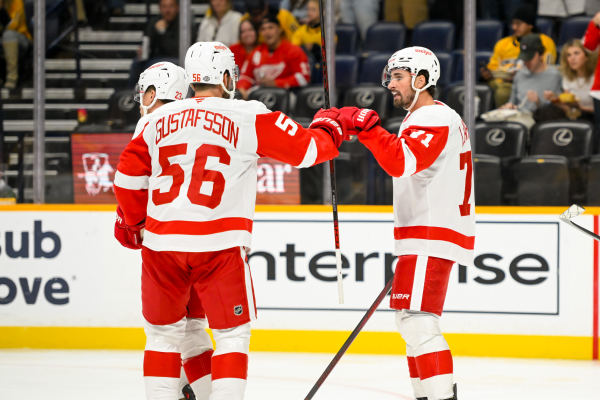
Through nine games, neither Detroit special team is in the top half of the league. That will have to change for the Red Wings to get where they intend by season's end
Through nine games, neither Detroit special team is in the top half of the league. That will have to change for the Red Wings to get where they intend by season's end
Through nine games, the Detroit Red Wings (4-4-1) are in the bottom half of the NHL on both special teams. The power play has scored five times in 27 chances (an 18.5% conversion rate), good for 17th in the league, which looks downright outstanding compared to a penalty kill currently succeeding at just 66.7% (20 kills in 30 tries), ranking 31st out of 32 teams.

Like everything else in the young season, we are talking about a small sample size, but nonetheless, enough hockey has been played to at least express some concern about each unit. Detroit was a top 10 power play last year, which proved an essential part of the Red Wings' formula to make it as far as they did, while no team can succeed with a PK that concedes one out of every three times it steps on the ice.
Both units have some important context to consider. Detroit's early season schedule has featured some formidable man advantages: two games against the New York Rangers, one against the New Jersey Devils, another against the Edmonton Oilers, who haven't quite found a rhythm up a man this season but nonetheless boast the league's scariest personnel. The PK has also had to deal with an early season injury to Tyler Motte, who was signed this summer in large part because of what he brings to the kill.
Meanwhile, the power play seems to be in a process of personnel self-discovery. The Red Wings don't have a shortage of power play-worthy talent, but arranging that talent to optimize it has been a work in progress. One major question has been Erik Gustafsson's fit as a Shayne Gostisbehere replacement, and whether Gustafsson or Moritz Seider ought to quarterback the top unit.
In the featured video above, I discuss the state of the Red Wings' two special teams and their paths forward.
Also from THN Detroit
Red Wings 2, Oilers 3 (OT) Game Notes
3-2 OT Loss to Edmonton Shows the Red Wings Can't Keep Up Their Defensive High-Wire Act
Red Wings' Win Streak Snapped with 5-3 Loss in Buffalo
Talbot Sharp, Another High-Danger Deficit, and Surviving 11/7: Red Wings 5, Devils 2 Game Notes
Emotional, Opportunistic Red Wings Forge Unlikely Three-Game Win Streak With 5-3 Win Over New Jersey
Despite Slow Offensive Start, 200-Foot Game and Underlying Numbers on Lucas Raymond's Side

